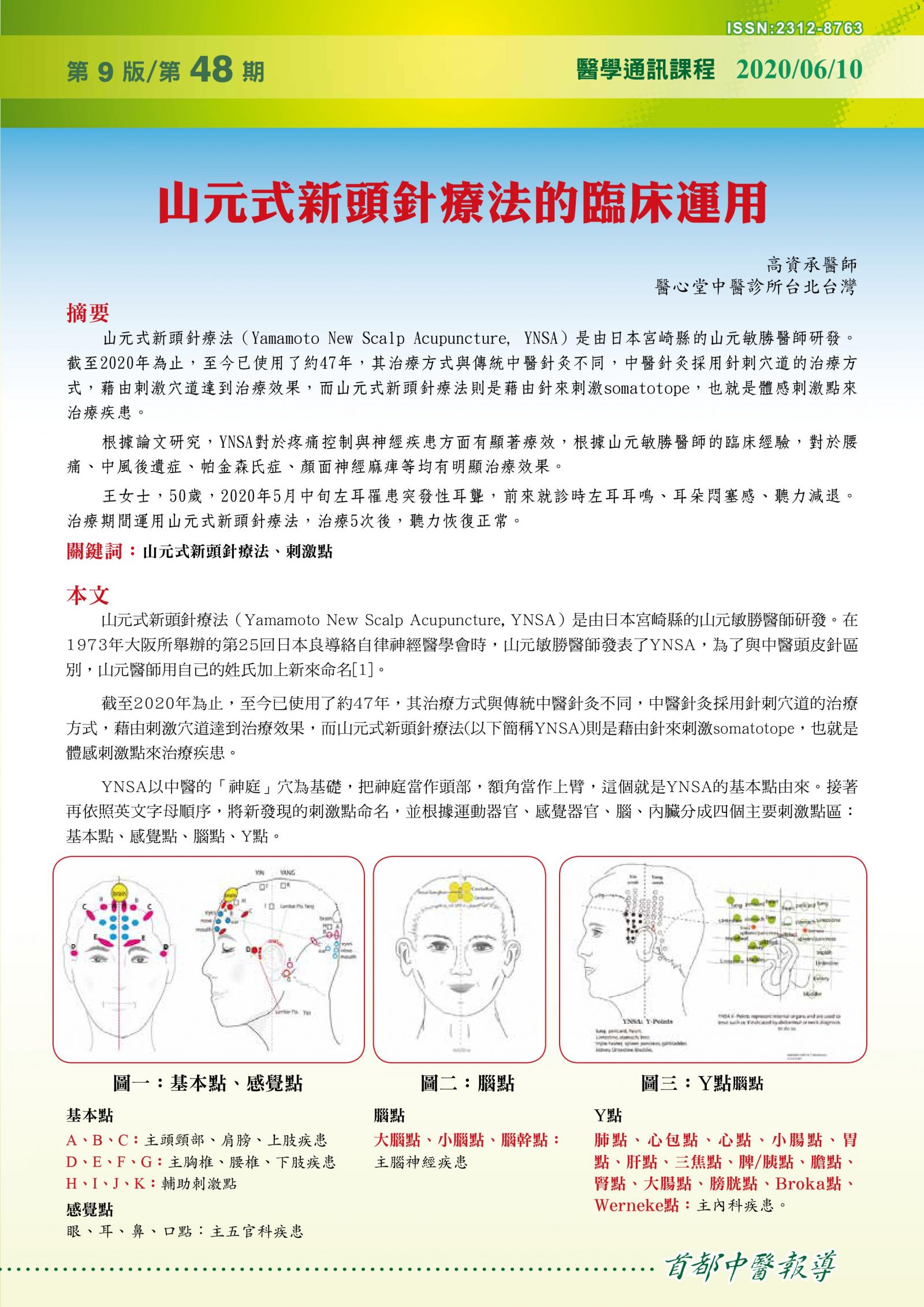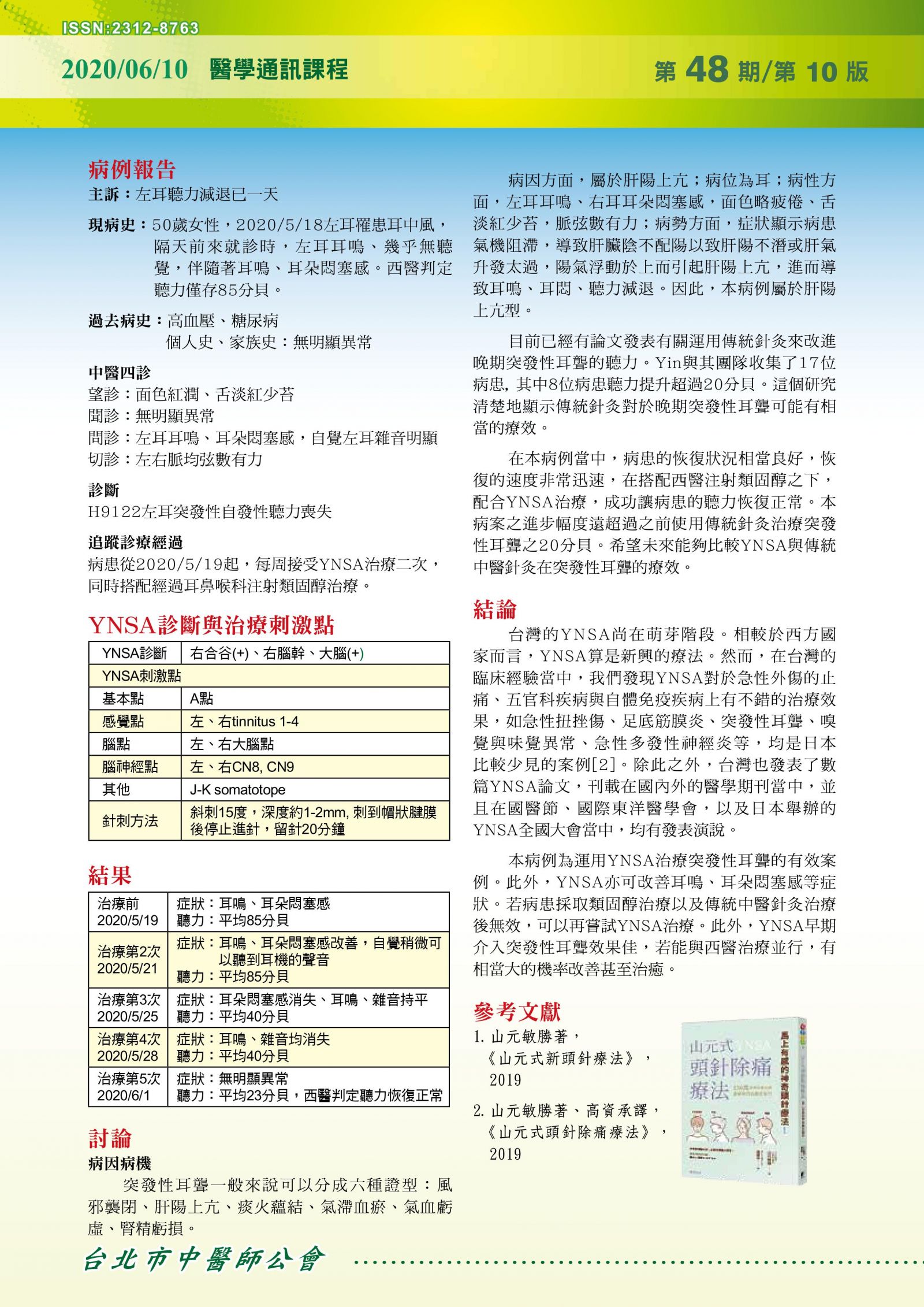文獻一、新北市中醫臨床顯效案例彙編九─運用山元式新頭針療法治療突發性耳聾顯效醫案
文獻連結
文獻二、中醫藥研究論叢─山元式新頭針療法治療耳中風之病例報告
文獻連結
文獻三、The role of Yamamoto new scalp acupuncture as an independent treatment for sudden sensorineural hearing loss: a case report Acupuncture in Medicine Vol 38, Issue 2, 2020
文獻連結
文獻四

